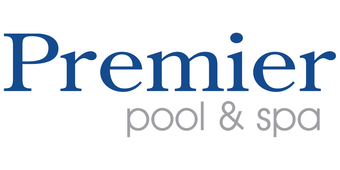How Pool Pumps & Permanent Spa Pumps Work
🔄 How Pool Pumps & Permanent Spa Pumps Work
Your pool pump is the heart of your circulation system. It pulls water from the pool, pushes it through your filter and heater, then returns it clean and treated. Understanding your pump type — and how to operate it correctly — is key to maintaining a healthy, clear pool or spa.
⚙️ Turning Your Pump On/Off
Your pump may be controlled by:
-
A switch or breaker (connected via gray electrical conduit)
-
A button directly on the pump (Start/Stop, Resume, or ON/Stop)
-
A pool automation system, like a remote, phone app, or automation panel
💧 Only turn on your pump when:
-
The pump basket is full of water
-
Valves are open
(Unless you are priming the pump)
🔌 Common Pump Types & Controls
🧱 Single-Speed Pumps
-
No control buttons on the pump
-
Controlled via external switch or breaker
-
Typically connected with gray conduit
-
Simple ON/OFF functionality
💡 Pentair IntelliFlo / IntelliPro Variable Speed Pumps (w/ Topside Controls)
-
Press 1, 2, 3, or 4, then Start/Stop to run a preset speed
-
Press Start/Stop again to stop the pump
-
If screen says "Display not active", control is via automation only


⚙️ WhisperFlo VST / Max-E-Pro VST & SuperFlo / SuperMax VST Pumps
-
Use the Start/Stop button on the control panel
-
Simple, built-in interface for basic operation
-
Speeds may be preset depending on model



🧠 IntelliFlo3 / IntelliPro3 VS Pumps
-
Turn pump on/off with the ON/Stop button on the touch interface
-
Designed for integration with Pentair’s IntelliCenter® automation
-
Offers advanced scheduling and sensor integration

🌐 Hayward Variable Speed Pumps
-
Use the STOP/RESUME button on the built-in or wall-mounted control
-
Common across Hayward VS series pumps
-
Controls may also be overridden by automation system



⚙️ Jandy® FloPro™ VS Pumps (with SpeedSet™ Controller)
-
Features a large, backlit LCD display with intuitive interface
-
Use “Start/Stop” button to power on or off
-
Press the Speed button to cycle between presets (e.g., low, medium, high, custom)
-
The menu button allows advanced scheduling, run times, and diagnostic info
-
Compatible with Jandy iAquaLink® for full remote automation
💡 SpeedSet™ controllers offer fast setup and real-time feedback — great for both homeowners and service pros.
💧 How Pool & Spa Pumps Work
Your pump continuously circulates water, which is vital for filtration, sanitation, and even heating. Here's a step-by-step breakdown of the process:
1️⃣ Suction
The pump draws water from the pool via skimmers, main drains, or sump lines. Suction lines are controlled by valves that manage flow direction.
2️⃣ Impeller Action
Inside the pump, a spinning impeller generates centrifugal force, pulling water in and pushing it out under pressure.
3️⃣ Pressure Increase
The impeller creates a low-pressure area that draws water in and forces it out with higher velocity — powering it through the rest of the system.
4️⃣ Discharge
Water exits through the discharge port and heads to the filtration system.
5️⃣ Filtration
Water passes through a sand, DE, or cartridge filter that removes debris, dirt, and micro-particles — keeping your water clean.
6️⃣ Return to Pool
Clean, filtered water is returned to the pool through return jets, completing the cycle.
🧪 Why It Matters
Pool pumps help:
-
🌊 Circulate and distribute chemicals evenly
-
🦠 Prevent algae and bacteria growth
-
✨ Keep your water crystal-clear and safe
✅ Premier recommends running pumps 24/7 in Minnesota for best performance — especially during peak season.
🛠️ Maintenance Tips
-
Clean the pump strainer basket weekly
-
Monitor valve positions for proper flow
-
Backwash or clean your filter regularly
-
Inspect for leaks, loud noises, or low pressure
🧱 Single-Speed Pumps
Single-speed pumps typically do not require programming. They operate at a fixed speed and are controlled via a manual switch or breaker.
⚡ Pentair IntelliFlo / IntelliPro Variable Speed Pumps (Topside Controls)
Programming Guide:
Pentair IntelliFlo Pumps: Programming and Features
⚙️ WhisperFlo VST / Max-E-Pro VST & SuperFlo / SuperMax VST Pumps
Programming Guide:
Pentair WhisperFlo VS (VST) Set-Up and Programming Video
💡 Pentair IntelliFlo3 / IntelliPro3 Variable Speed Pumps
Programming Guide:
How to Program an IntelliFlo/Pro3 VSF
🧠 Hayward Variable Speed Pumps
Programming Guide:
How To Set Up A Hayward Variable Speed Pump For Summer
⚙️ Jandy® FloPro™ VS Pumps (with SpeedSet™ Controller)
Programming Guide:
Jandy SPEEDSET Set Up and Programming
Note: The above links lead to external YouTube videos. Premier Pool & Spa is not responsible for the content of these videos.
Need Help With Your Pump?
Our experts can diagnose issues, help program your variable-speed pump, or recommend upgrades for energy efficiency.
👉 📩 Contact Us for Pump Support »
👉 📅 Book a Pool Service Visit »









